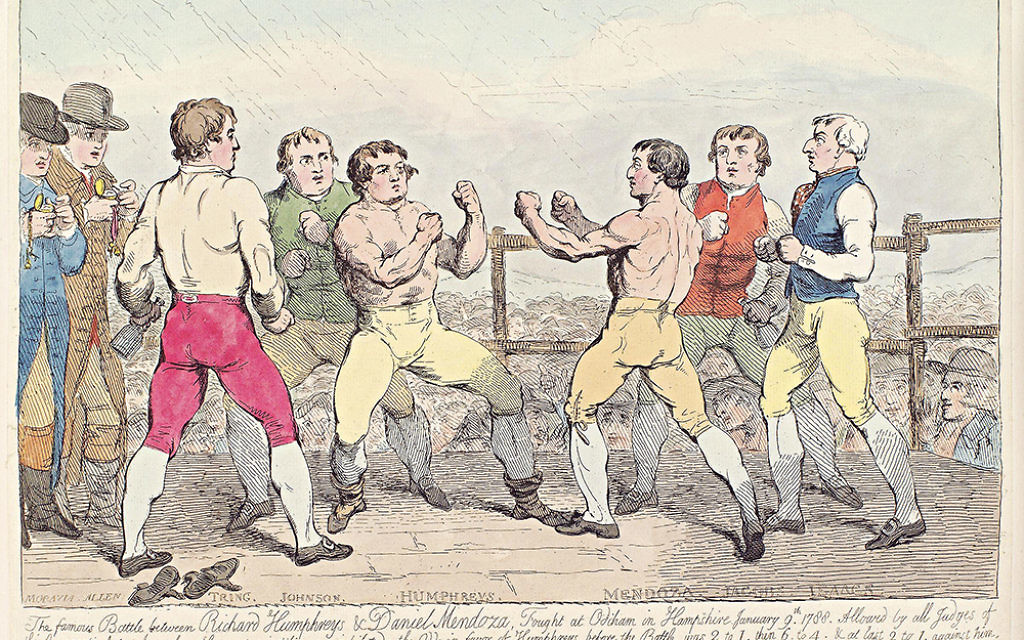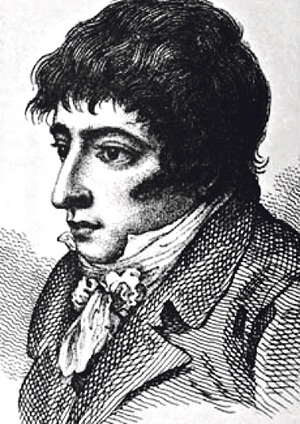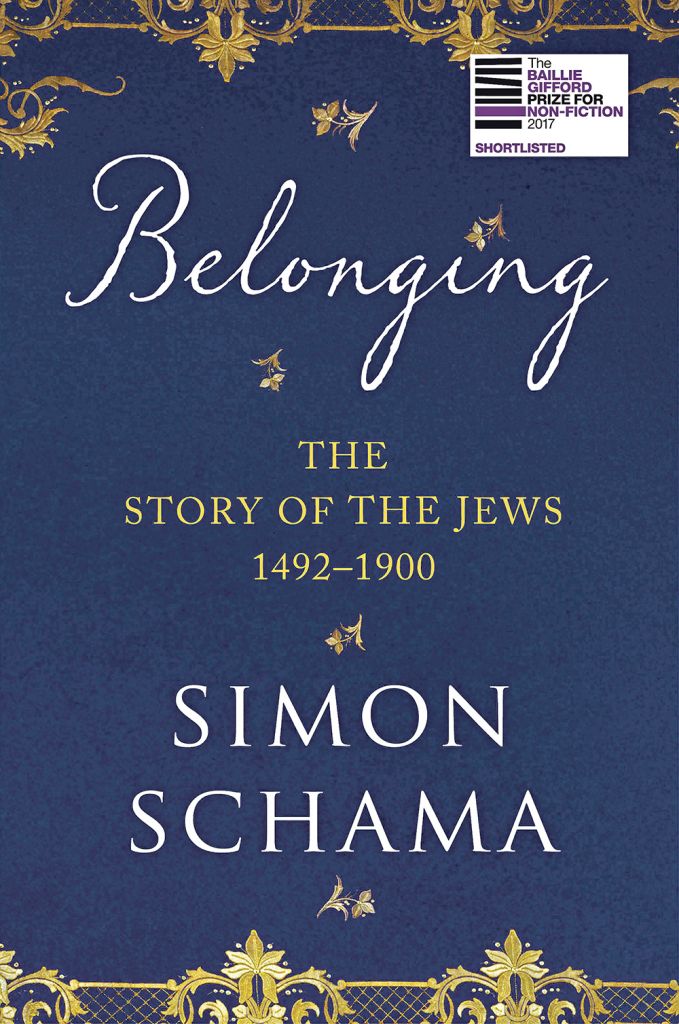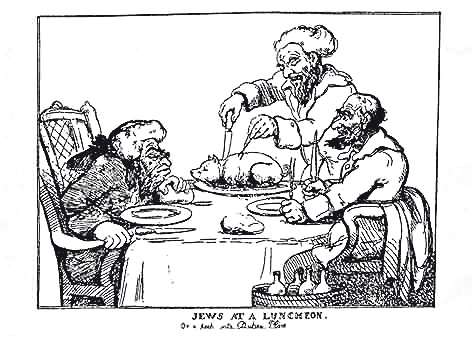Simon Schama’s Story of the Jews: Belonging
Renowned British-Jewish historian takes readers to 17th century England, where Jews are grappling to become accepted by society – and, in the case of one brave boxer, to become the most well-known face in the country.

Miracles and massacres, expulsion and settlement, prejudice and tolerance are all on the agenda for the second part of Simon Schama’s epic history of the Jews.
In Belonging: The Story of the Jews (1492-1900), the renowned historian picks up the story from the Spanish Inquisition of 1492 and trails it to the brink of the 20th century.
There are fascinating stories not just of rabbis and philosophers, but of mystics, militants and messianic pretenders.
Get The Jewish News Daily Edition by email and never miss our top stories Free Sign Up
There’s even the tale of a poetess living in the Venetian ghetto, a general in Ming China and an opera composer from 19th century Germany.
In the extract below, Schama takes his readers to 17th century England, where Jews are grappling to become accepted by society – and, in the case of one brave boxer, to become the most well-known face in the country.
Even when he was beating the living daylights out of an opponent, delivering a facer to that particular spot between the brows which would bring on temporary blindness, or a sickener to the mark, the pit of the stomach, there was something oddly cherubic about Dan Mendoza: the long lashes fringing wide brown eyes; the Cupid’s bow lips; the mass of dark, curly hair, grown long |and artfully cut, tied at his neck with a black silk ribbon.

One day that lovelock would be his undoing. He was too pretty to be taken seriously. And too short and too light into the bargain: five foot seven and barely 160 pounds, the weight of an apprentice. But when he stripped before the set-to, the Fancy saw that the handsome headwas planted atop a bull neck and a barrel chest, and this should have warned anyone taking him on that they might not escape without a good deal of hurt.
But one after the other, cocky bruisers looked at Dan and saw nothing but a dirty little Jewish tough from Mile End chancing his arm. Go on, how much damage could an Ebrew do? Quite a lot, as it turned out.
There were 8,000 Jews living in England by the late 18th century and a thousand of them were said to have shown up at Doncaster for the third and last of his great grudge matches with Richard Humphreys. ‘Daniel, Daniel, vekhayam!’ they chanted after the victory; ‘Daniel, Daniel, live forever!’

Mendoza lived long enough, at any rate, to publish his memoirs when he was 52, the first of any professional sportsman, but then he was the first in many things. No Jew before him had been taken to Windsor in the royal carriage to converse with King George, and easily too, as if they were old companions strolling the castle terrace.
Before Mendoza, with the notable exception of Gluckel of Hameln’s memoir, Jewish autobiographies had been the exclusive province of rabbis, philosophers, men of mind
and faith like Leone Modena and Solomon Maimon.
Mendoza liked to think of himself as a ‘professor of pugilism’ and he created an ‘academy’ of self-defence while he was still in his twenties. His first book, The Art of Boxing, was dedicated to ‘his Scholars’. Bare-fist pugilism, though often accused of ‘blackguardism’, he believed to be a science which, properly analysed, comprehended and learned, would always prevail over brute disadvantages of height and weight.
But his memoir is full of instances of his being picked on, insulted and assaulted as a Jew, and this was the strongest motive in Mendoza’s choice of vocation.
When Mendoza was born in 1764, no one among England’s Jews had forgotten the paranoid hatred which had greeted mild attempts to pass a Jewish naturalisation bill 11 years earlier.

Everyone knew Jewish brokers controlled the stock market, never mind that the number of brokers was limited to 12. Now they would buy up the shires! Locusts is what they were, a horrid creeping swarm, stripping anything on which they alighted. And like vermin they carried contagion on their foul-smelling bodies.
Before you knew it the cathedrals would be turned into synagogues and the tombs at St Paul’s and Westminster would contain the remains of ‘Sir Nadab Issachar’ and ‘The Rt Hon. the Earl of Balaam’.
On Guy Fawkes Night 1753, the effigy of the gunpowder plotter was replaced by a mannikin Jew, with hooked nose and beard, burned to black ash on the bonfire in imitation of a Spanish auto-dafé.
A fantasy of the anti-Semites was that Jews secretly craved and gobbled the very pork they pretended to abhor. Caricatures featured buxom Jewesses, their breasts spilling from the neckline, leaning greasily forward to kiss a piglet, an anglicised version of the old German Judensau in which Jews sucked at the teats of porkers or greedily swallowed their s**t. 1753 and the years following saw random pork forcings. Jews on the road or in taverns were jumped on, roped to a pillar, their mouths pulled open and crammed with scalding gammon and bacon.

‘Get a bit of pork / Stick it on a fork / And give it to a Jew boy, a Jew.’…You know a Jew at first sight,’ wrote William Romaine, a famous evangelical preacher at St George’s Hanover Square, ‘look at his eyes. Don’t you see a malignant blackness underneath them which gives them such a cast as bespeaks guilt and murder.
‘You can always tell a Jew by this mask it throws such a dead livid aspect over all his features that he carries enough evidence in his face to convict him of being a crucifier.’
No one said that of Daniel Mendoza’s face, or to it, especially not after
it had become one of the most famous phizzes in England. In the late 1780s and 90s it was everywhere: on tankards and teapots; snuff boxes and rummers; posters and songsheets.
And it was a departure from the usual Jewish grotesque beloved by the
caricaturists: lank-haired, bearded, greasy-chopped, hook-nosed.
Though it was beyond even his power to succeed entirely, for a while at least, Mendoza elbowed Shylock aside as the archetype of a Jew.
- Simon Schama’s Belonging: The Story of the Jews (1492-1900) is published by The Bodley Head, priced £25 (hardback) and available as an audiobook

Thank you for helping to make Jewish News the leading source of news and opinion for the UK Jewish community. Today we're asking for your invaluable help to continue putting our community first in everything we do.
For as little as £5 a month you can help sustain the vital work we do in celebrating and standing up for Jewish life in Britain.
Jewish News holds our community together and keeps us connected. Like a synagogue, it’s where people turn to feel part of something bigger. It also proudly shows the rest of Britain the vibrancy and rich culture of modern Jewish life.
You can make a quick and easy one-off or monthly contribution of £5, £10, £20 or any other sum you’re comfortable with.
100% of your donation will help us continue celebrating our community, in all its dynamic diversity...
Engaging
Being a community platform means so much more than producing a newspaper and website. One of our proudest roles is media partnering with our invaluable charities to amplify the outstanding work they do to help us all.
Celebrating
There’s no shortage of oys in the world but Jewish News takes every opportunity to celebrate the joys too, through projects like Night of Heroes, 40 Under 40 and other compelling countdowns that make the community kvell with pride.
Pioneering
In the first collaboration between media outlets from different faiths, Jewish News worked with British Muslim TV and Church Times to produce a list of young activists leading the way on interfaith understanding.
Campaigning
Royal Mail issued a stamp honouring Holocaust hero Sir Nicholas Winton after a Jewish News campaign attracted more than 100,000 backers. Jewish Newsalso produces special editions of the paper highlighting pressing issues including mental health and Holocaust remembrance.
Easy access
In an age when news is readily accessible, Jewish News provides high-quality content free online and offline, removing any financial barriers to connecting people.
Voice of our community to wider society
The Jewish News team regularly appears on TV, radio and on the pages of the national press to comment on stories about the Jewish community. Easy access to the paper on the streets of London also means Jewish News provides an invaluable window into the community for the country at large.
We hope you agree all this is worth preserving.
-
By Brigit Grant
-
By Laurent Vaughan - Senior Associate (Bishop & Sewell Solicitors)
-
By Laurent Vaughan - Senior Associate (Bishop & Sewell Solicitors)
-
By Laurent Vaughan - Senior Associate (Bishop & Sewell Solicitors)
-
By Laurent Vaughan - Senior Associate (Bishop & Sewell Solicitors)





















